Isn't it fascinating how a single boutique can spark a revolution? You might know that Vivienne Westwood emerged in 1971 on London's King's Road, but the journey from "Let It Rock" to a cornerstone of punk fashion is marked by so much more. With each name change and collaboration, Westwood didn't just create clothes; she shaped a movement. The story intertwines with the pulse of youth culture and music, inviting you to explore the pivotal moments that defined an era. What elements contributed to her lasting influence?
Origins of Vivienne Westwood
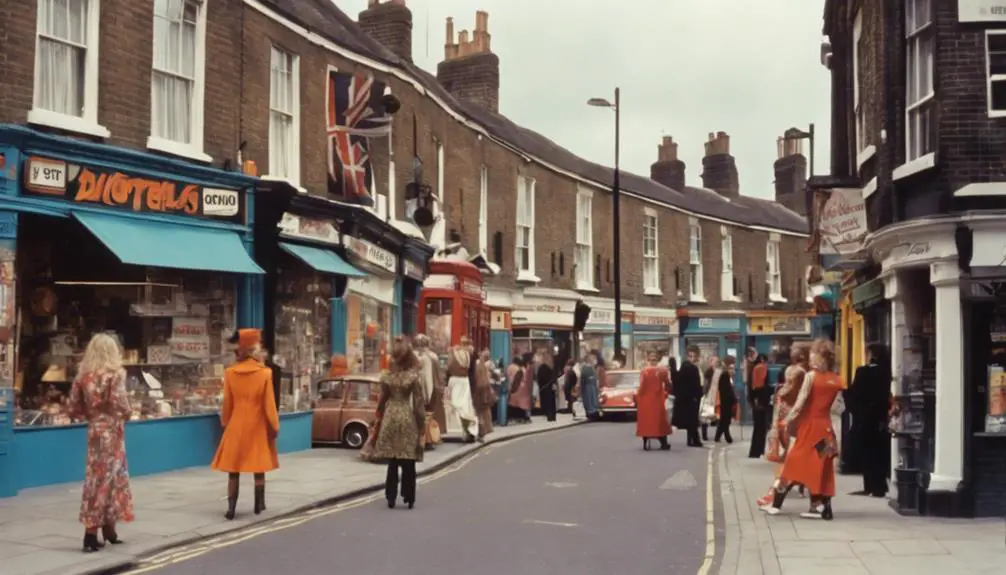
Vivienne Westwood's fashion journey kicked off in 1971 when she opened her first boutique, Let It Rock, in Chelsea, becoming a cornerstone of punk fashion. This vibrant hub on Kings Road quickly evolved, reflecting the eclectic spirit of the era through several name changes, including SEX boutique and Seditionaries. Each transformation mirrored the shifting styles and cultural influences that defined the 1970s, showcasing Westwood's keen eye for innovation.
During this time, she began to develop her distinctive style, which would later be recognized through specific vintage identification resources that highlight her unique approach to fashion.
Collaborating with Malcolm McLaren, the renowned music promoter, Westwood intertwined fashion and punk music, creating a dynamic that resonated with a generation yearning for rebellion. Together, they shaped the punk movement, using clothing as a form of self-expression that challenged societal norms. By the late 1970s, her designs gained significant recognition, making her a prominent figure within the fashion industry.
In 1981, Westwood launched her first official collection, the Pirate Collection, making waves on the catwalk and solidifying her reputation as a British designer of note. This collection introduced bold silhouettes and historical references, setting her apart from her contemporaries.
Then, in 1986, she revealed the iconic orb logo, symbolizing her unique blend of tradition and innovation.
Through Let It Rock and beyond, Vivienne Westwood not only defined punk fashion but also laid the groundwork for a lasting legacy that continues to inspire designers and fashion enthusiasts alike. Her journey is a demonstration of the powerful intersection of creativity, culture, and identity.
The Birth of Punk Fashion
The vibrant scene of the 1970s saw the emergence of punk fashion, driven by a desire for rebellion and self-expression. At the heart of this cultural movement was Vivienne Westwood, who, alongside Malcolm McLaren, opened their first boutique, Let It Rock, on Kings Road in Chelsea in 1971. This shop marked the dawn of their journey into punk fashion, reflecting the raw energy of the era.
As the boutique evolved into Too Fast to Live, Too Young to Die in 1972, and later into Sex in 1974, Westwood introduced provocative designs that would challenge societal norms. Her early experiences ignited a passion for innovative fashion design, setting the stage for her groundbreaking creations that defined an era the punk movement.
Her bold creations, including bondage trousers and daring rubber dresses, became emblematic of the punk movement, capturing the spirit of youthful defiance. The refitting of the boutique as Seditionaries in 1976 solidified its status as a hub for punk fashion, drawing in the rebellious youth enthusiastic to express their individuality.
Westwood's collaboration with the Sex Pistols, managed by McLaren, was pivotal in popularizing her designs, ensuring that punk fashion became a significant cultural and fashion phenomenon of the decade.
As you explore the history of punk style, it's clear that Westwood's innovative spirit and her keen understanding of youth culture were instrumental in shaping not just a fashion trend, but a movement that embraced freedom, creativity, and a distinctive aesthetic.
The legacy of her work continues to inspire fashion today, proving that punk isn't just a style; it's an enduring attitude.
Key Collections and Milestones
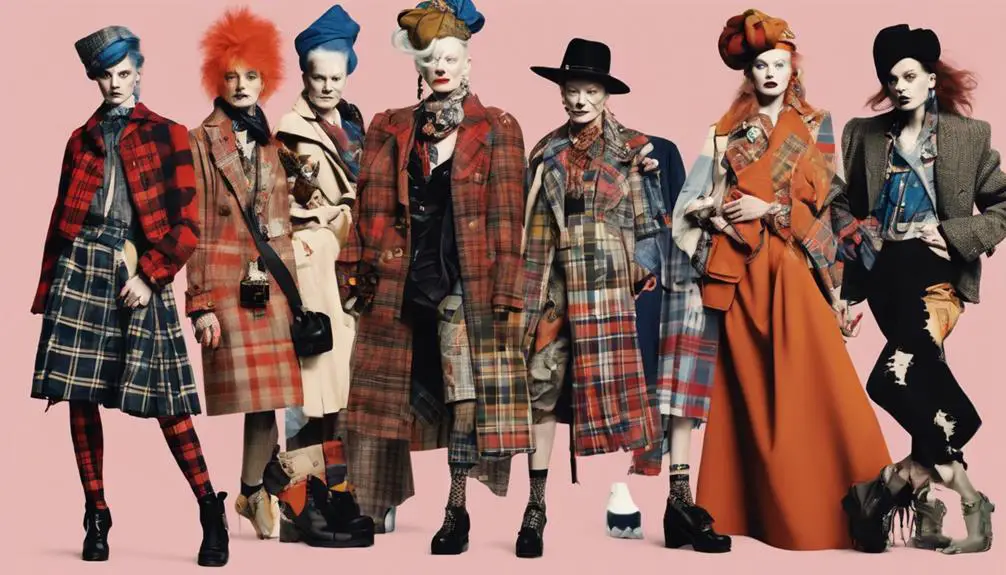
Pivotal moments in Vivienne Westwood's career are marked by her groundbreaking collections that consistently pushed the boundaries of fashion. Her first commercial ready-to-wear collection, "Pirates," launched in Spring 1981, introduced your audience to her distinct aesthetic and laid the foundation for her future as a British fashion designer. This collection was a game-changer, blending punk influences with romantic elements.
In Spring/Summer 1984, the "Hypnos" collection showcased innovative bodysuit designs and elevated Westwood's status at the Best of Five global fashion awards in Tokyo, further solidifying her international reputation. The 1985 "Mini-Crini" collection brought corsets into the limelight as outerwear, demonstrating her exceptional tailoring skills with fitted Harris Tweed jackets, truly setting her apart in the fashion world.
Fast forward to Autumn/Winter 1988, the "Time Machine" collection reimagined traditional English tailoring, incorporating innovative garment construction inspired by medieval armor, which highlighted Westwood's fascination with historical influences.
A significant milestone arrived in 2004 with the retrospective exhibition "Vivienne Westwood: 34 Years in Fashion," held at the Victoria and Albert Museum. This event celebrated her significant contributions to the fashion industry and solidified her legacy as a revolutionary designer.
Each collection and milestone reflects Westwood's fearless creativity and unwavering commitment to challenging fashion norms, ensuring her place in the annals of fashion history.
Influence and Cultural Impact
Since the early days of her career, Vivienne Westwood's influence on fashion and culture has been undeniable, reshaping perceptions and norms within the industry. Her journey began with her boutique, Let It Rock, which became a cornerstone for the punk movement, merging fashion with music and youth culture in London. As she rebranded her shop to Sex in 1974, her provocative designs challenged societal standards, leaving a lasting impact on the fashion landscape.
Westwood's innovative designs transcended aesthetics, often addressing pressing cultural issues through her collections. Here are three key aspects of her influence:
- Punk Aesthetic: Westwood's work epitomizes the punk spirit, celebrating individuality and rebellion against the establishment.
- Political Engagement: Many of her garments, like the 1977 Anarchy Shirt, featured bold political messages, critiquing mainstream values and encouraging discourse on societal problems.
- Awards and Recognition: Her transformative contributions earned her prestigious accolades, including the O.B.E. from Queen Elizabeth II in 1992 and the title of Dame Commander in 2006, solidifying her status as a fashion icon.
Vivienne Westwood's collections, such as the Pirate Collection and the Savage Collection, showcased not only her innovative designs but also her commitment to addressing cultural issues.
Legacy and Future Directions
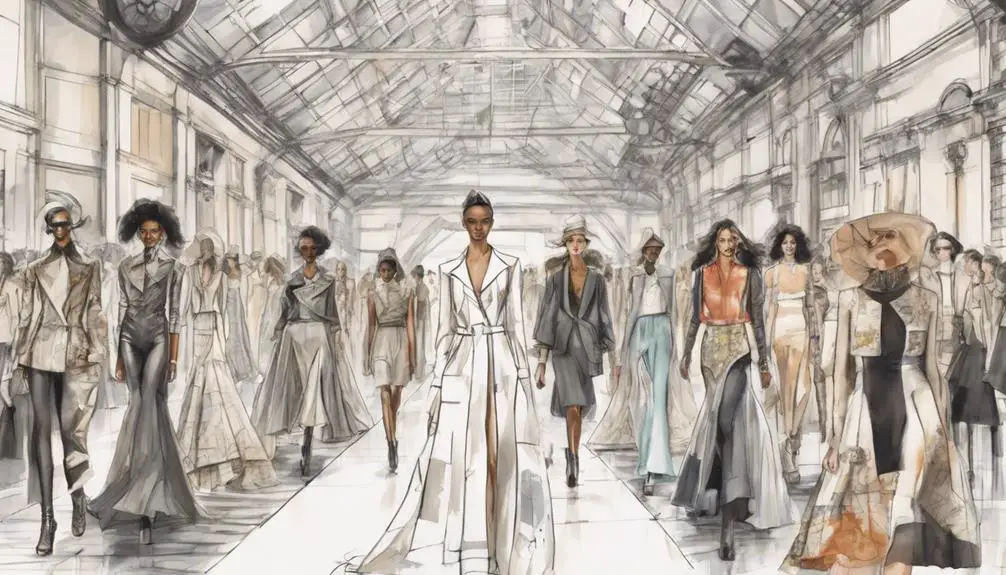
Vivienne Westwood's legacy resonates powerfully within the fashion world and beyond, as her revolutionary spirit continues to inspire designers and activists alike. Co-created with Malcolm McLaren in the 1970s, her punk fashion movement didn't just shake up runways; it redefined identity in clothing, influencing countless creators across generations.
Today, her brand thrives internationally, with boutiques in vibrant cities like Los Angeles, Tokyo, and New York, fostering a global dialogue about fashion.
Sustainability and activism are at the forefront of Westwood's legacy, epitomized by her Climate Revolution foundation and partnerships that promote environmental protection. This commitment propels a new wave of designers to prioritize eco-friendly practices, ensuring that fashion can be both stunning and responsible.
Following her passing in December 2022, her husband, Andreas Kronthaler, has pledged to uphold her design ethos and innovative spirit in future collections, keeping her influence alive and well.
Moreover, Westwood's focus on gender expression and inclusivity has paved the way for diverse representations within fashion. Her designs challenge traditional norms and invite a broader spectrum of identities into the industry.
As you explore the future of fashion, remember that Vivienne Westwood's impact stretches far beyond fabric and thread; it's a movement grounded in activism and sustainability that champions inclusivity and self-expression.
With each new collection, the legacy of this iconic designer continues to inspire and ignite passion in aspiring fashionistas and activists around the globe.


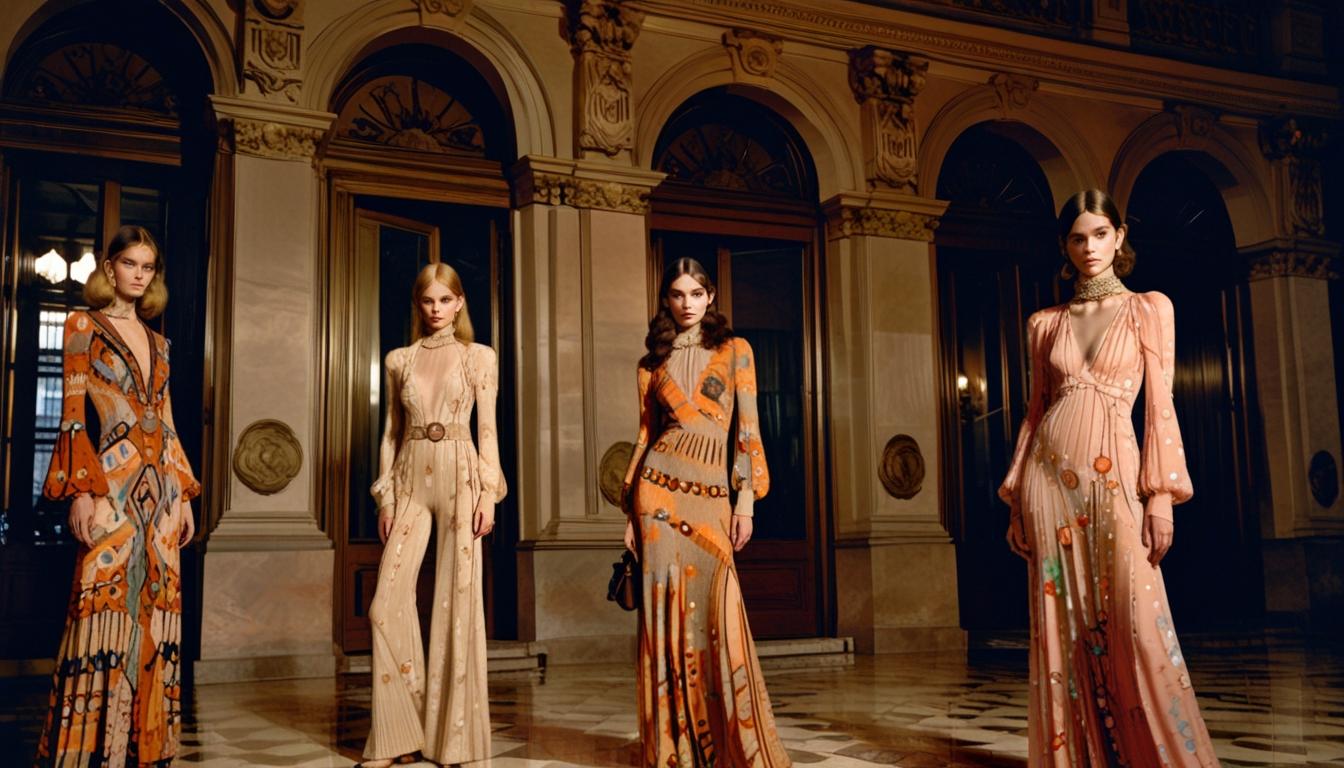
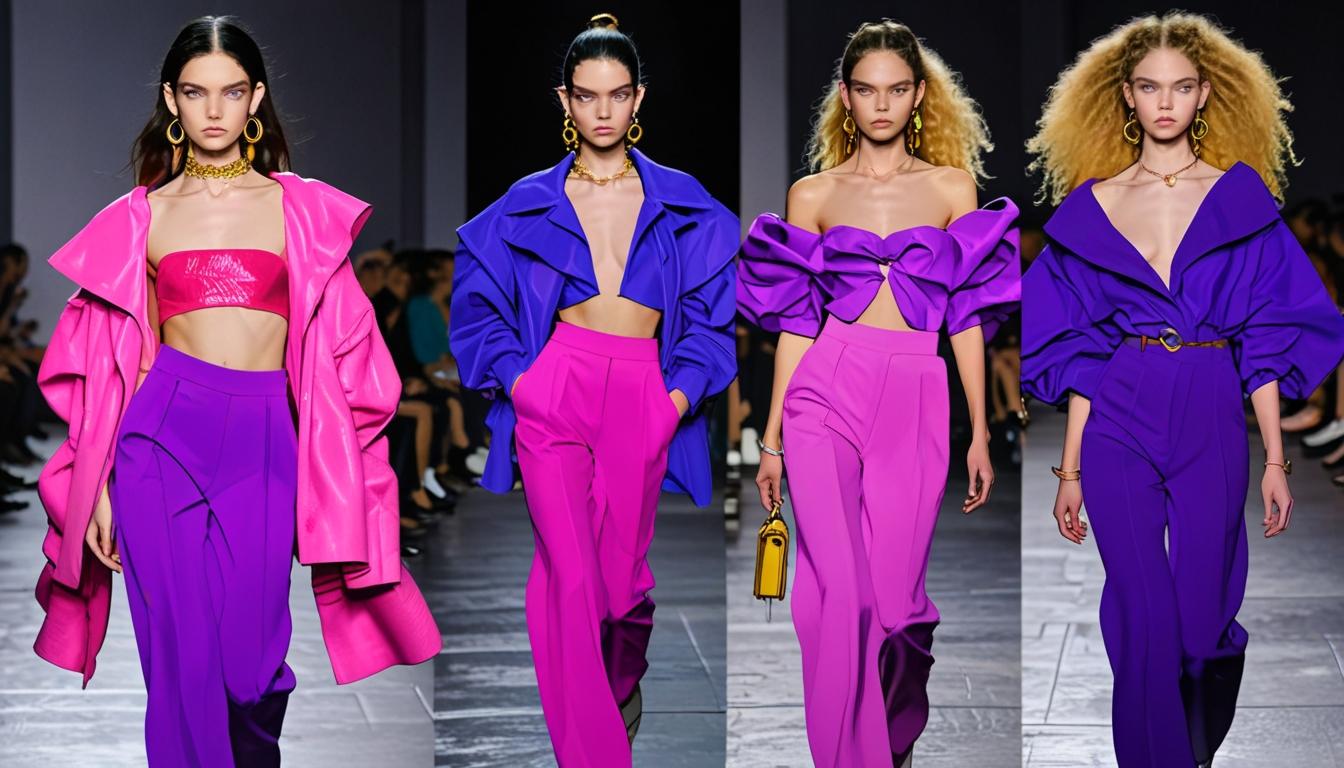
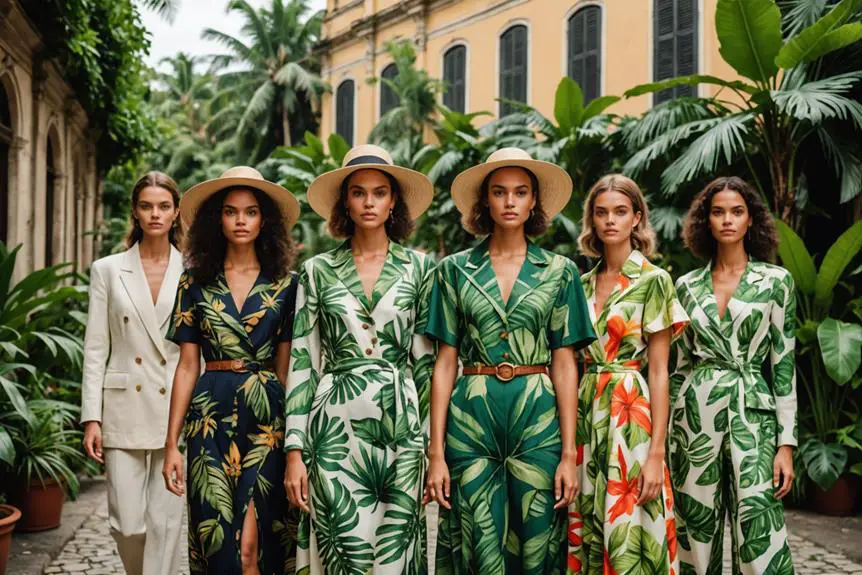
What’s up, I would like to subscribe for this webpage to get hottest updates, so
where can i do it please assist.